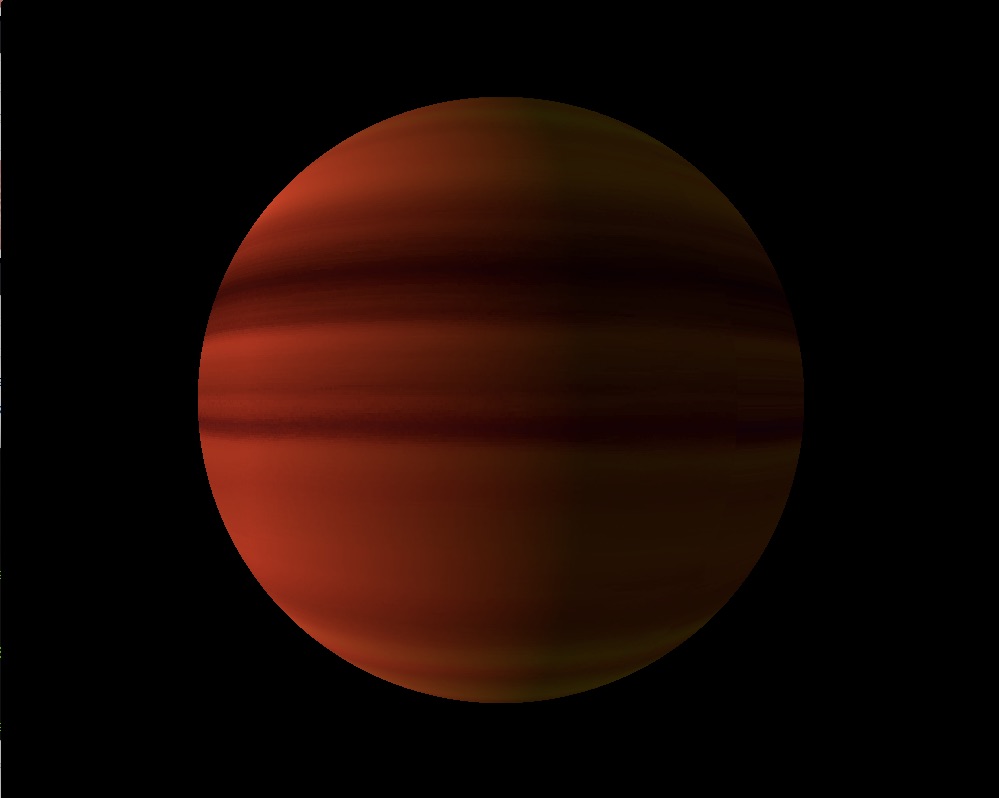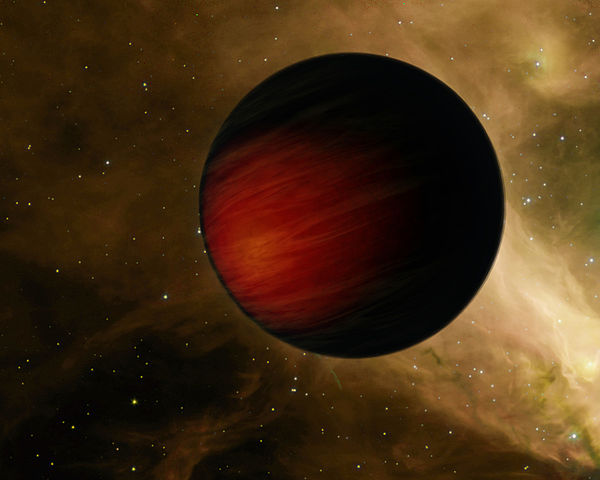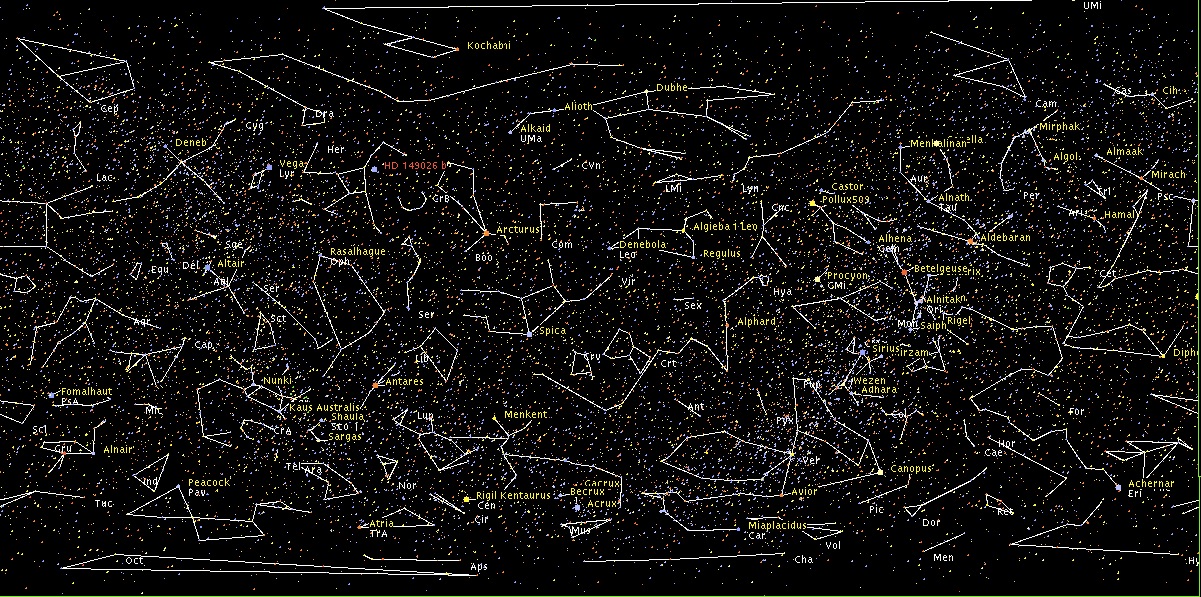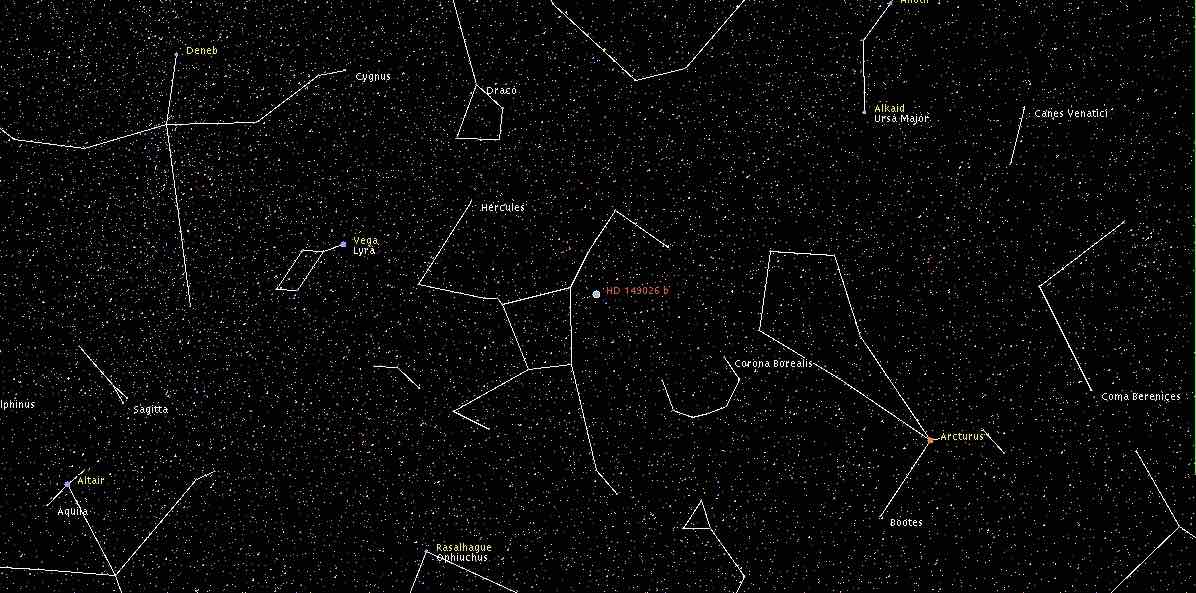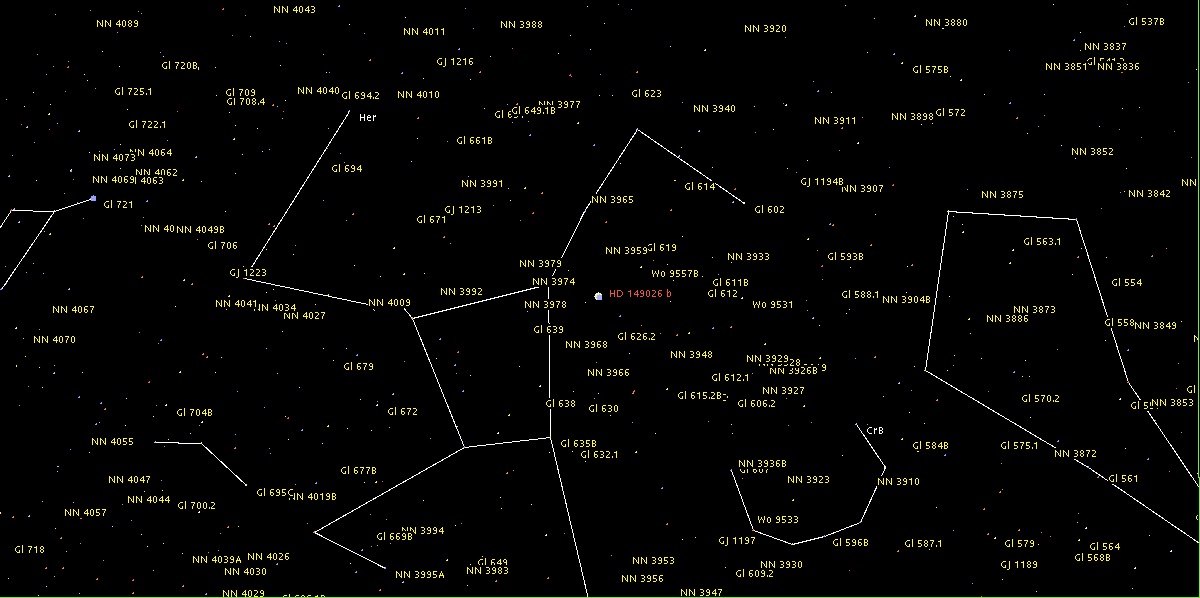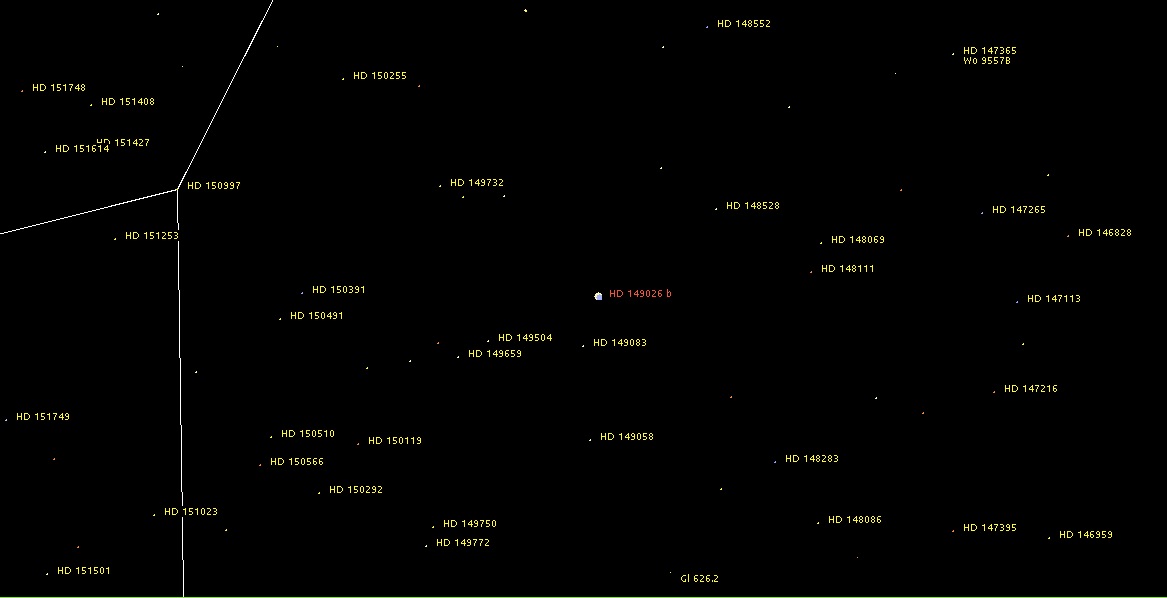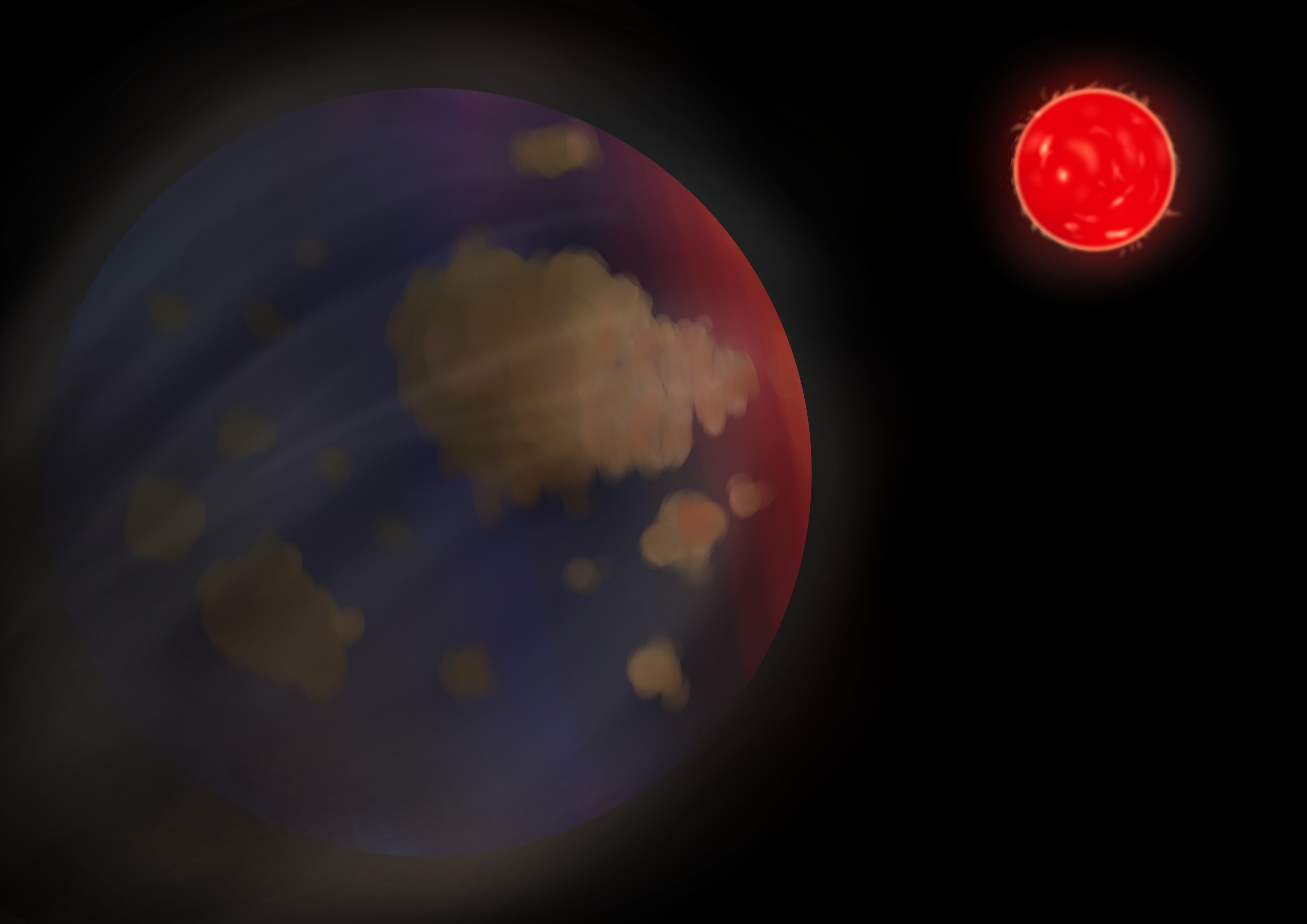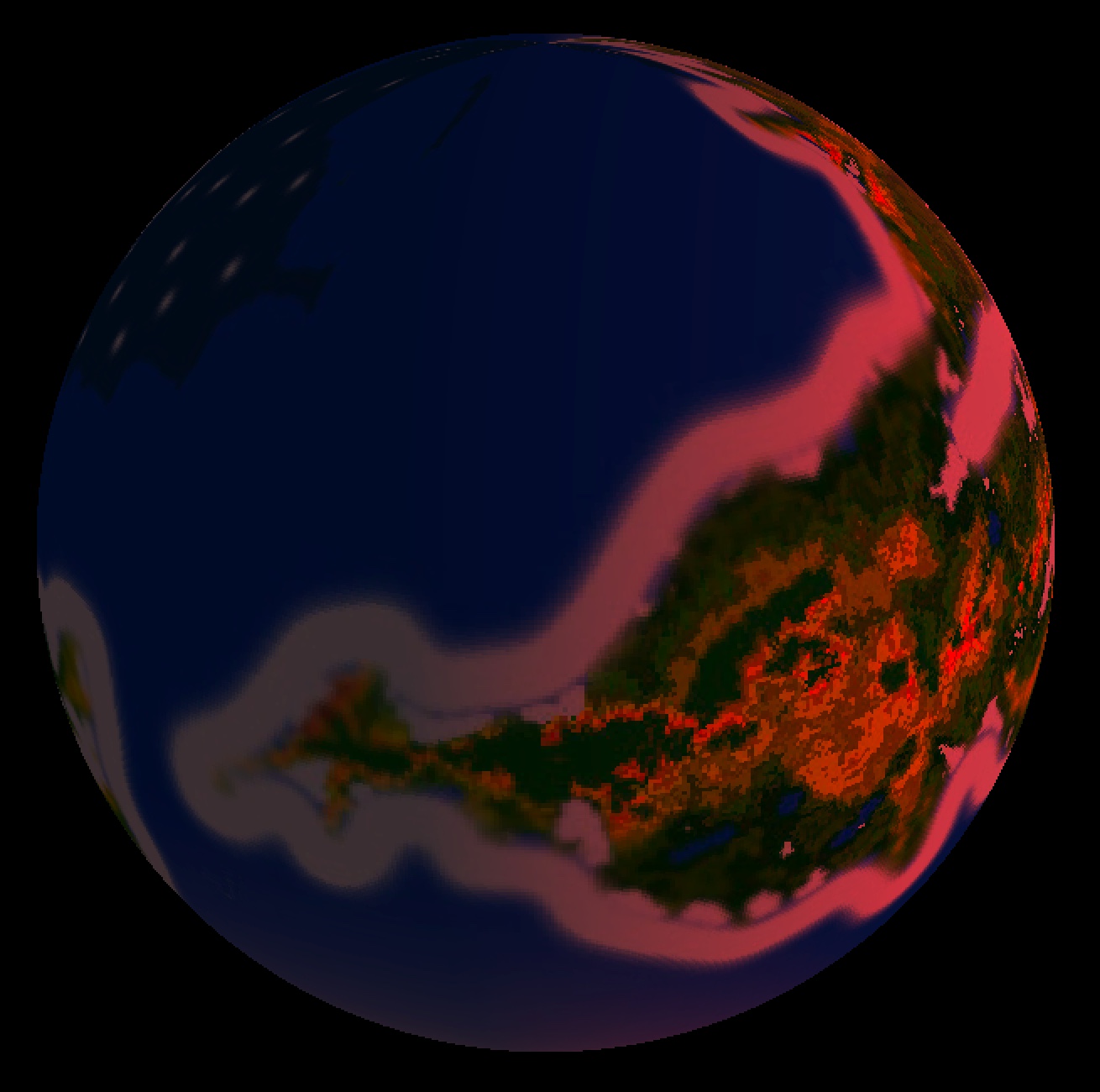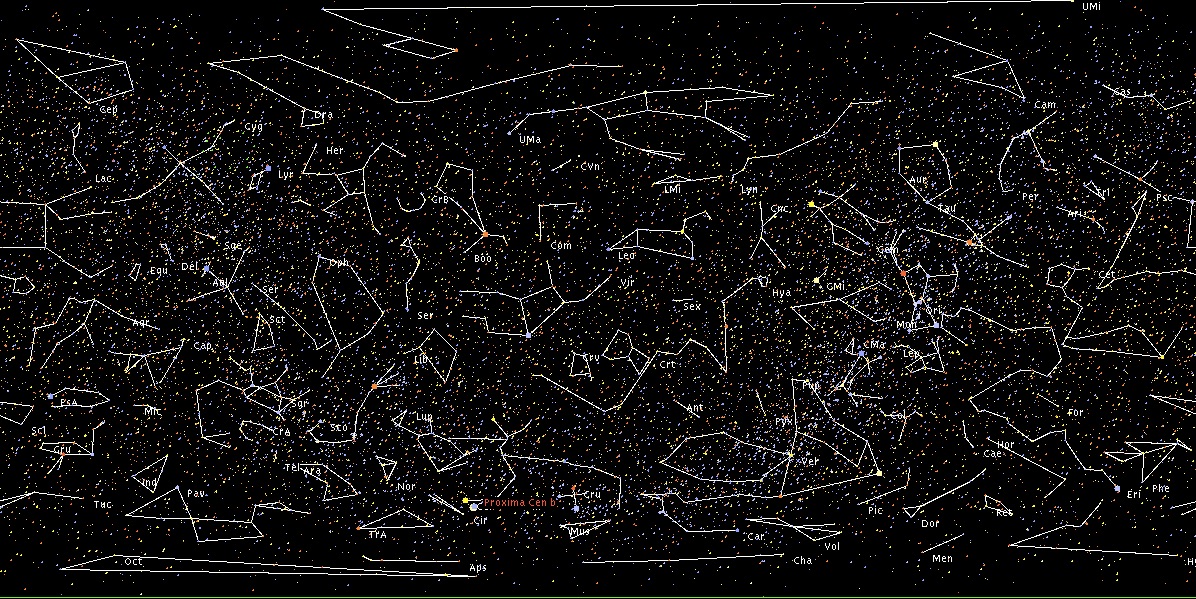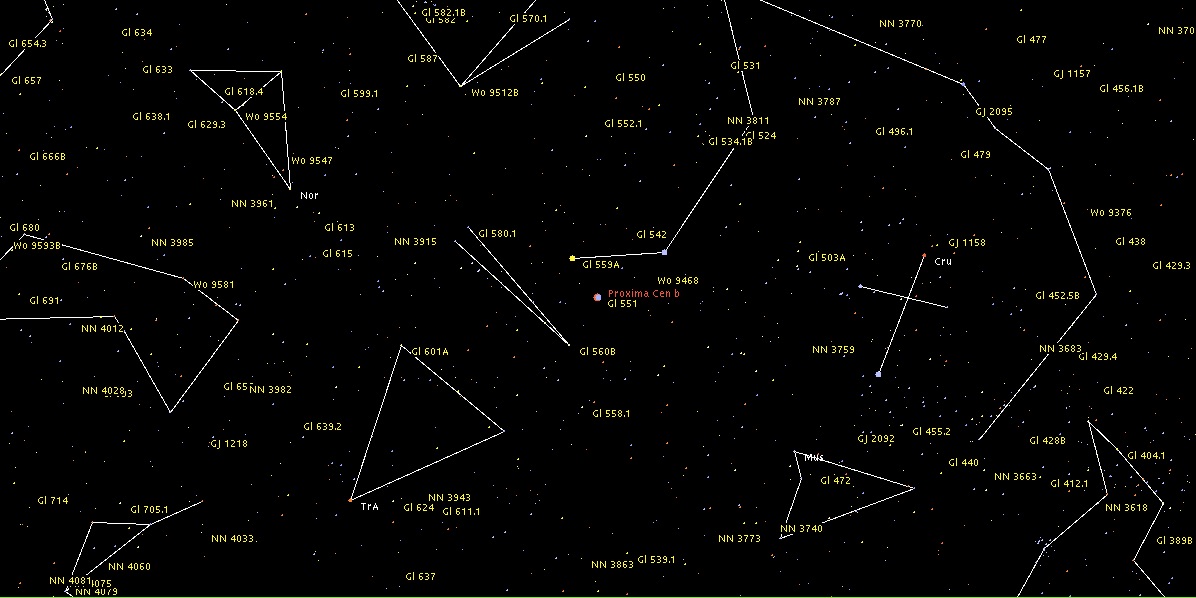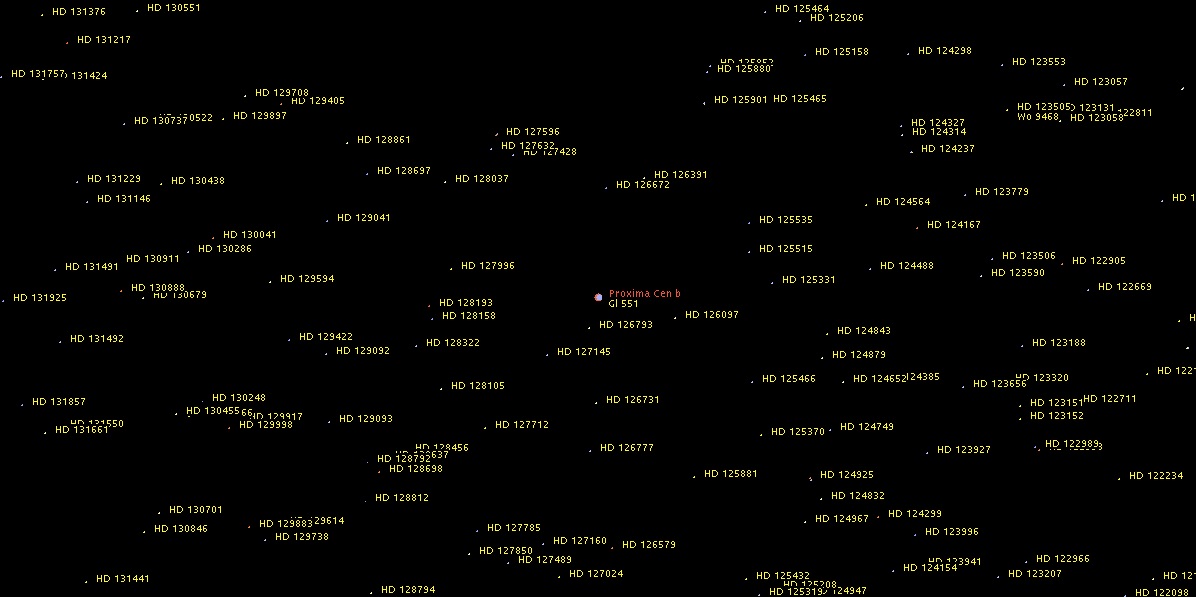HD 209458 b
HD 209458 b (also known as Osiris) was the first exoplanet in the world to be observed by the transit method in 1999. It orbits the star V376 in the Pegasus constellation, and is named after the ancient Egyptian god Osiris. It is a “Hot Jupiter” that orbits very close its host star, and its surface temperature is thought to be over 1,000°C. Due to the star’s gravity, one surface of the planet is constantly facing the host star.
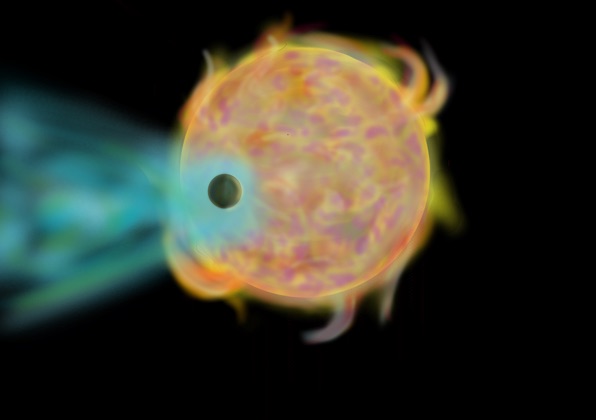
(Image Credit: Shione Fujita, Habitable Research Group, SGH Moriyama High School)
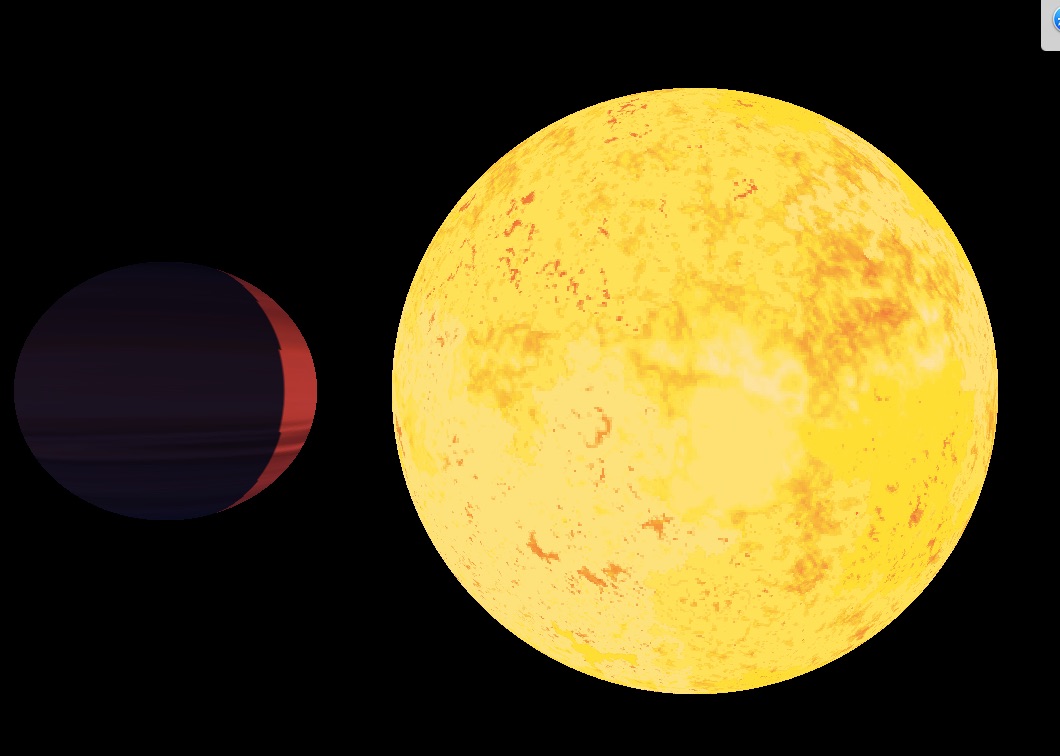
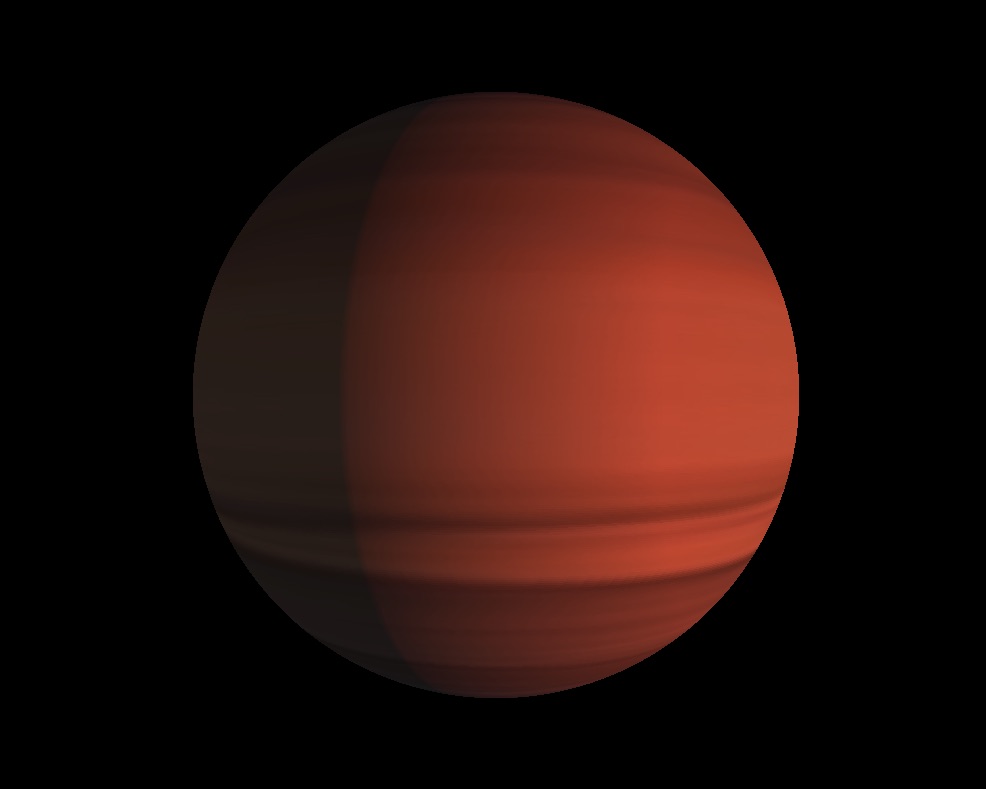
(Image Credit: Ryusuke Kuroki, Yosuke Yamashiki & Natsuki Hosono)
HD 209458 b was also the first exoplanet to have a confirmed atmosphere. By observing the light from the star that passes through the planet’s atmosphere at each wavelength, the molecules that make up the planet’s atmospheric composition can be understood. Due to these observations, it was determined that the lower part of HD 209458 b’s atmosphere was found to contain sodium, while the upper layer contains hydrogen and carbon molecules. This also suggests that HD 209458 b is very different from the planets we know in our solar system, with a hot, violently ejected atmosphere with a comet-like trail and floating clouds of minerals.
Currently, the only way to understand the characteristics of exoplanet atmospheres is to observe the light from the host star that passes through the atmospheres of these planets. Because many stars can be observed at once analyzed automatically using this method, the transit method is a very powerful observation tool.
HD 209458 b’s transit can be observed with a relatively small 30cm diameter telescope. If people can analyze the data themselves and obtain a light curve that shows the existence of exoplanets, the distant universe of “exoplanets” will feel closer. We hope everyone will give it a try.
(文責:芝池諭人)
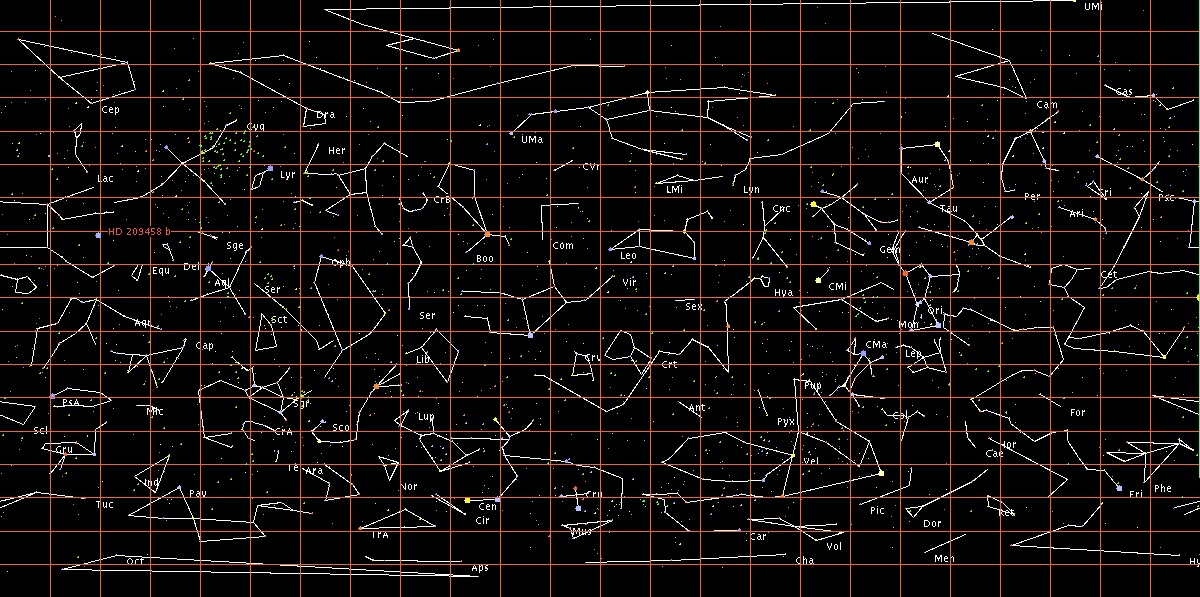
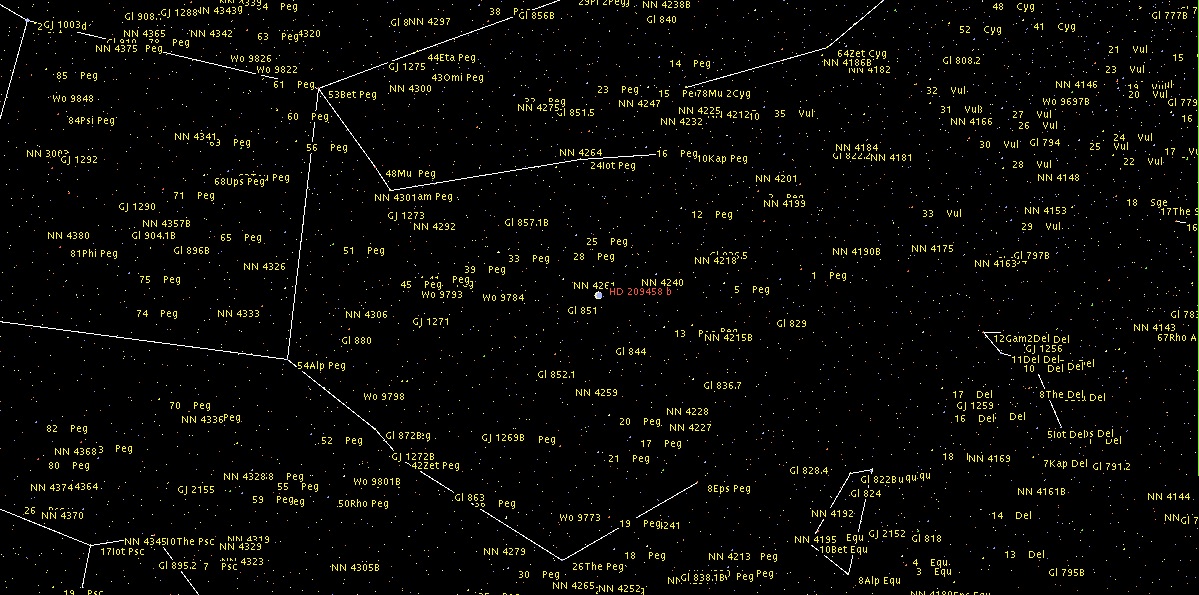
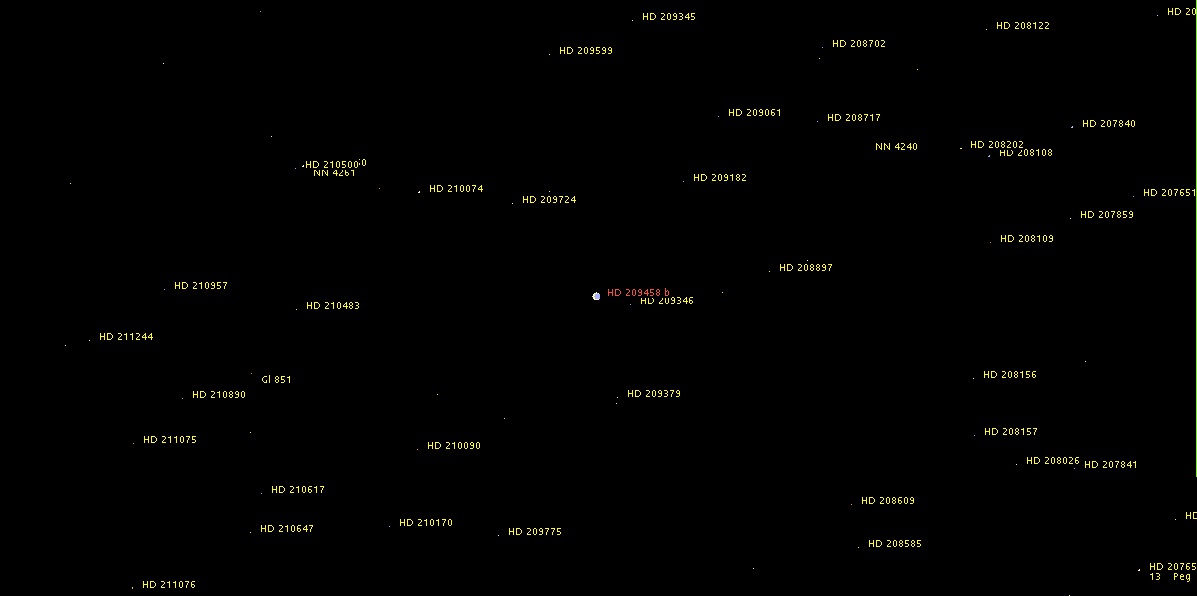
(HD 209458 b’s location using the ExoKyoto Stellar Window)
For more information about HD 209458 b, please visit the following:
http://www.exoplanetkyoto.org/exohtml/HD_209458_b.html

